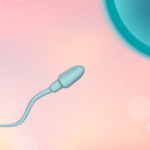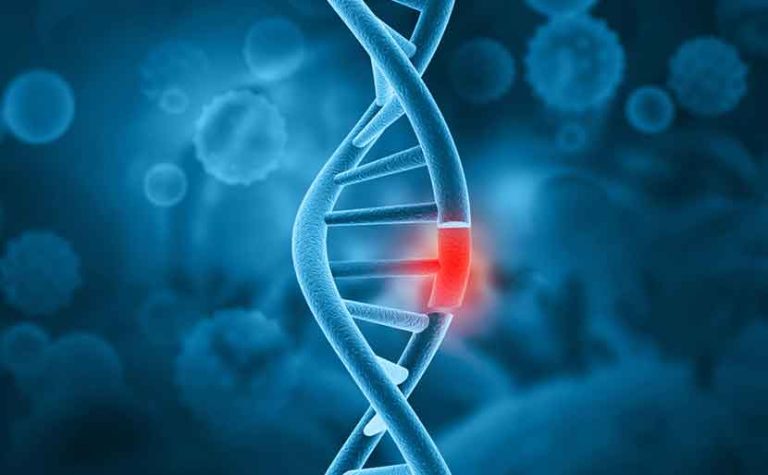Summary of This Article
Female hormones are produced in the ovaries of women and maintain growth, maturation, and reproductive functions as a woman. The amount of female hormones secreted during pregnancy changes significantly. When implantation occurs, a hormone called human chorionic gonadotropin (hCG) is secreted from the part that later becomes the placenta. The secretion of hCG is characterized by a peak around 8 to 12 weeks of pregnancy. It then decreases rapidly, and by the time the placenta is complete at around 16 weeks of pregnancy, the secretion stabilizes. In the later stages of pregnancy, estrogen and progesterone increase further, which may cause severe drowsiness and worsen constipation. After childbirth, when the placenta detaches from the mother’s body, the hormone levels drop to almost zero.
What are Female Hormones?
Hormones are essential substances that play a role in regulating various functions to maintain life, health, and activity, as well as to support growth and reproductive functions.
Hormones are produced in various tissues throughout the body, including the pituitary gland in the brain, thyroid and parathyroid glands, adrenal glands, and pancreas. As of 2022, more than 100 types of hormones have been identified. Notable examples include insulin, which lowers blood sugar levels, and adrenaline, which raises blood pressure.
Among these hormones, “female hormones” are produced in the ovaries of women and are responsible for female growth, maturation, and maintaining reproductive functions.
Roles and Functions of Female Hormones
There are two types of female hormones: “estrogen (follicle hormone)” and “progesterone (luteal hormone).”
Estrogen is the hormone that creates femininity. Its functions include “creating a feminine body” and “preparing for pregnancy.” It promotes the development and maintenance of reproductive organs such as the uterus, creates a rounded female body shape, and also helps to maintain clear skin.
The secretion of estrogen fluctuates with the menstrual cycle, peaking in the twenties. This is followed by about 20 years of sexual maturity. During menopause, which occurs between the ages of 45 and 55, estrogen levels drop sharply, leading to menopause. After menopause, the lack of estrogen makes women more susceptible to lifestyle-related diseases and bone fragility, similar to men.
Progesterone’s role is to “maintain pregnancy.” It raises the basal body temperature and stabilizes the uterine lining to make it easier for a fertilized egg to implant. During pregnancy, it helps to sustain the pregnancy. It also increases appetite, retains water and nutrients, and promotes the development of mammary glands.

Pregnancy and Female Hormones
Female hormones play an essential role in establishing and maintaining pregnancy. Here, we will clearly explain the fluctuations of female hormones during the menstrual cycle, the symptoms caused by hormonal imbalance, and the solutions to address these issues.
Female Hormones Changing with Menstrual Cycle
The menstrual cycle, which typically occurs every 28 days, is regulated by the action of female hormones. The menstrual cycle is divided into four phases: the follicular phase, ovulation, the luteal phase, and menstruation.
During the follicular phase, primordial follicles in the ovaries grow into mature follicles under the influence of signals from the brain. The hypothalamus in the brain secretes gonadotropin-releasing hormone (GnRH), which prompts the pituitary gland to release follicle-stimulating hormone (FSH) and luteinizing hormone (LH). These hormones stimulate follicle growth, increasing the secretion of estrogen, which gradually thickens the uterine lining.
When the follicles mature and the uterine lining is sufficiently thick, the secretion of FSH and LH peaks, triggering ovulation, where an egg is released from the follicle. This marks the ovulation phase.
After ovulation, the follicle transforms into the corpus luteum, leading to the luteal phase. Progesterone secreted by the corpus luteum prepares the uterine lining to be receptive to a fertilized egg.
If the fertilized egg does not implant, or pregnancy does not occur, progesterone levels start to decrease about a week after ovulation. Another week later, the thickened uterine lining sheds, resulting in menstruation.
The activity of female hormones can be tracked by basal body temperature. When estrogen is dominant, it is called the ‘low temperature phase’, and when progesterone is dominant, it is the ‘high temperature phase’.
By monitoring basal body temperature daily, one can determine which female hormone is active. A rise in basal body temperature indicates that menstruation is likely to occur in about two weeks. If the high temperature phase lasts for more than two weeks without menstruation, it is a strong indication of pregnancy.
Symptoms and Causes of Hormonal Imbalance
The most common symptom caused by hormonal imbalance is changes in the menstrual cycle. Menstruation relies on a delicate balance of hormones. Estrogen and progesterone are in a complementary relationship, meaning that when the level of one increases, the level of the other decreases. Although female hormones show regular fluctuations with the menstrual cycle, even minor physical or mental distress can disrupt their secretion, often leading to abnormalities in the menstrual cycle.
Other well-known symptoms of hormonal imbalance include menopause and PMS (premenstrual syndrome).
During menopause, as previously mentioned, the secretion of estrogen decreases sharply. This leads to various symptoms such as hot flashes, sweating, dizziness, tinnitus, irritability, and depression. Collectively, these symptoms are referred to as menopausal disorders.
PMS (premenstrual syndrome) occurs before menstruation and involves physical symptoms like breast tenderness or pain, weight gain, fatigue, hot flashes, and swelling, as well as psychological symptoms such as irritability and depression.
However, treatments for menstrual irregularities or infertility can also disrupt the balance of female hormones, causing these symptoms to appear regardless of age.
Balancing Hormones
To balance female hormones, pay attention to the following points:
- Engage in moderate exercise (aim for at least three times a week without overexertion).
- Maintain a regular lifestyle (preferably get some morning sunlight upon waking).
- Ensure adequate sleep (recommendation is 7 hours or more, and going to bed by midnight).
- Consume a well-balanced diet.
- Avoid extreme dieting.
Additionally, in the following situations, it is advisable to visit a gynecologist to check for other possible conditions or to adjust hormone balance with medication:
- Severe menstrual pain that interferes with daily life.
- Bleeding outside of menstrual periods (irregular bleeding).
- Premenstrual syndrome (PMS).
- Menopausal symptoms.
- Infertility.
- Autonomic nervous system disorders.

Changes in Female Hormones During Pregnancy
During pregnancy, the secretion of female hormones changes dynamically. Here, we will explain the key points divided into implantation, early pregnancy, mid to late pregnancy, and post-delivery.
Hormonal Changes During Implantation
Upon implantation, a hormone called human chorionic gonadotropin (hCG) is secreted from the part that will later become the placenta. hCG is a hormone secreted only by the chorionic tissue of the placenta, and pregnancy tests work by detecting a certain level of this hormone.
Female Hormones in Early Pregnancy (1-4 Months)
hCG secretion peaks around 8-12 weeks of pregnancy. After that, it decreases rapidly, and by around 16 weeks of pregnancy, when the placenta is fully formed, the levels stabilize. The secretion of hCG due to the establishment of pregnancy also increases estrogen and progesterone, which prepare the body to nurture the baby.
hCG is essential for the establishment and maintenance of pregnancy, but it also causes morning sickness. Changes in the sense of smell, such as finding previously tolerable odors unbearable, are due to the increase in hCG.
Additionally, the increase in estrogen leads to the main symptoms of morning sickness, such as nausea and vomiting. The increase in progesterone affects intestinal movement, causing bloating, gas buildup, and constipation. The rise in estrogen and progesterone can also lead to skin problems, breast tenderness, and pain due to the development of mammary glands.
NIPT (Non-Invasive Prenatal Testing) can be performed during this period. NIPT (Non-Invasive Prenatal Testing) can be carried out once pregnancy is confirmed by ultrasound examination. It allows the detection of chromosomal disorders such as Down syndrome, trisomy 18, trisomy 13, and sex chromosome abnormalities, which can affect the baby’s health and development.
Female Hormones in Mid to Late Pregnancy (5-10 Months)
In the later stages of pregnancy, estrogen and progesterone levels increase even more. Estrogen levels can rise to 50 to 1100 times their pre-pregnancy values. The increase in progesterone can cause strong drowsiness and worsen constipation.
Around the 20th week of pregnancy, as hCG levels stabilize, the secretion of human placental lactogen (hPL) increases. hPL is a hormone that ensures nutrients are efficiently delivered to both the baby and the mother. hPL peaks around the time of childbirth and decreases sharply after delivery.
Prolactin (PRL), also known as the mammary gland-stimulating hormone, gradually increases to prepare for milk production. However, progesterone suppresses the action of PRL, so milk production does not begin until after childbirth.
Roles and Functions of Female Hormones After Childbirth
Estrogen and progesterone, which significantly increased during pregnancy, drop to almost zero once the placenta detaches from the mother’s body after childbirth.
On the other hand, the rapid decrease in progesterone, which had been suppressing prolactin (PRL), allows milk production to begin immediately after delivery.
Postpartum depression is observed in 10-20% of women within 3 to 6 months after childbirth. One contributing factor is the rapid hormonal changes after delivery, particularly the sharp fluctuations in progesterone.
A hormone that has recently gained attention is oxytocin. Produced in the hypothalamus and secreted by the pituitary gland, oxytocin helps to eject milk from the nipples, making it easier for the baby to nurse. Additionally, it assists in contracting and returning the enlarged uterus to its pre-pregnancy size.
Conclusion
In summary, we have discussed the roles and functions of female hormones during pregnancy. Female hormones are essential for a woman’s life and undergo dynamic changes during pregnancy. These changes can cause various discomforts, so if you notice any issues, it is advisable to visit your local gynecologist.
Once your pregnancy is confirmed, please consider NIPT (Non-Invasive Prenatal Testing). This test can be performed once pregnancy is confirmed by an ultrasound examination. It screens for congenital conditions that could affect your baby’s growth and development. If you have any questions about NIPT (Non-Invasive Prenatal Testing), please feel free to contact Hiro Clinic NIPT.
References
- Japan Endocrine Society – About Hormones | For the General Public | Japan Endocrine Society
Article Editorial Supervisor

Dr Hiroshi Oka
NIPT specialist clinic, MD
Graduated from Keio University, School of Medicine
 中文
中文






















